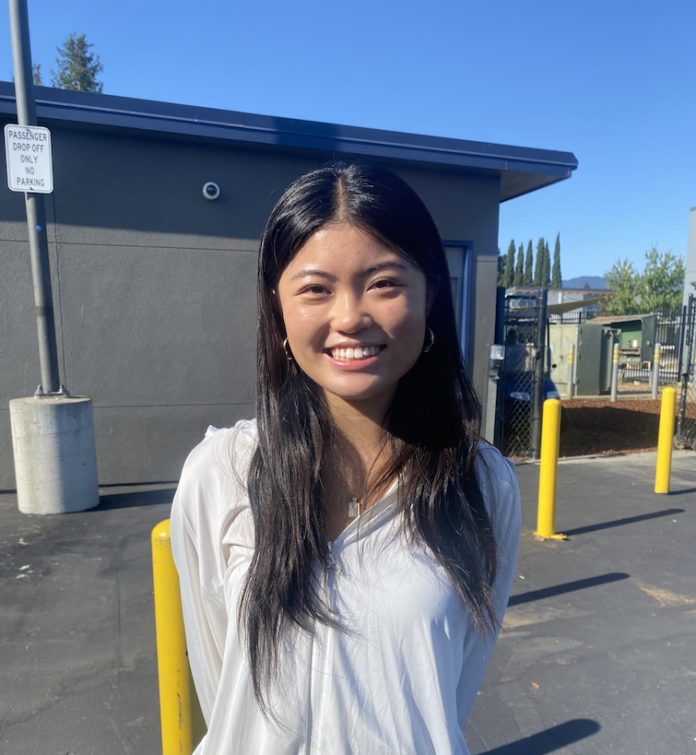Cheating and plagiarism aren’t exactly new challenges for educators to have to contend with.
But, with AI machines like ChatGPT and Gemini making academic misconduct easier—while also showing promise as an important educational tool—many high schools are racing to develop new policies to deal with the quick adoption of the technology.
“We’re definitely playing catch-up,” said Spencer Swart, an AP Government teacher at Prospect High School, which is part of the Campbell Union High School District. “(AI) is definitely something we talk about in our meetings. Now, how do we work with it? That’s a good question.”
According to Swart, the District doesn’t yet have an official policy to address AI. Instead, individual departments at Prospect have adopted their own. Prospect also has a contract with Turninit, a plagiarism detection tool that claims to be able to identify AI usage accurately.
Swart notes that there hasn’t been much change in their cheating and plagiarism policy since the release of programs like ChatGPT.
To detect plagiarism, Turnitin gives each paper a percentage score, estimating the likelihood that a student’s work was created by AI. The software also highlights phrases or sentences that could’ve been lifted directly from another person’s work.
Yet, this software is not always reliable.
Samantha Ko, a senior at Prospect, describes a moment when she says she was falsely accused of using AI.
During her junior year, Ko submitted an essay, via Turnitin, for her English class. Afterwards, her teacher pulled her aside and told her the AI score produced by Turnitin was very high.
However, Ko maintains she didn’t turn to the powerful technology for the assignment.

“I was so confused, because I never used AI in that assignment,” Ko said. “It definitely made me more cautious.”
Swart notes that it would be easy for schools to decide to tell students to avoid AI completely. But he also understands why students choose to use it.
Swart says that school is about “products and process.” Products are the essays, presentations or tests that students create or perform. But there’s also the learning journey that happens along the way.
“Schools value the end product, right?” Swart said. “Since there is a perception that is all schools care about, students take the path of least resistance. I want to start emphasizing the process of learning.”
While Prospect departments are tackling how to address AI usage with students, teachers have also started to use AI in their classrooms.
Recently, the CUHSD acquired a year-long contract with “Magic School,” an AI software that helps teachers generate discussion or quiz questions. Swart says he hasn’t used the software, but he did start using other AI programs just this year. He says he uses them to upload his learning material and asks AI to see if he’s hitting all the major points along. He also uses it for grading the practice essays he writes.
Swart estimates around 25% of teachers at Prospect use AI in their teaching materials regularly.
Along with teachers, many students at Prospect use AI as a learning tool—Ko being one of them
“For the AP Physics (AP exam) I didn’t want to go through all the whole textbook and all the slides.” Ko said. “So, I gave ChatGPT the textbook name and linked-in all my slides. It was able to quickly summarize everything.”
Ko notes she started using AI her sophomore year of high school and says that AI has been pretty helpful for her most of the time.
“But sometimes it can be wrong,” she said. “It can pull information that might not be the most accurate.”
When asked whether AI usage in education is good or bad, Swart said “I’m going to say a bad thing but there is good within it.”
Riya Minglani is a graduating senior at Prospect High School. For this article she used Otter.ai (a popular cloud-based transcription software that claims to leverage Artificial Intelligence) for notetaking, but did not otherwise use AI software to write this article.











It’s actually wild how fast the whole learning landscape is changing, especially with AI creeping into classrooms like at Prospect High School. I remember feeling a bit lost trying to figure out how to get a real grasp on business skills outside my regular studies. That’s why doing something like a business summer school uk really gave me an edge. The mix of practical projects and meeting like-minded students opened my eyes to real-world business stuff you’d never get just sitting in class.